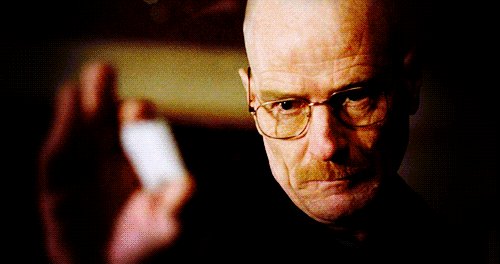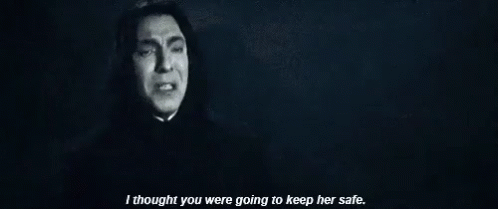Nobody likes an ineffective antihero. The purpose of antiheroes in general is to provide readers with someone more complex and morally ambiguous than the classic, do-gooder hero.
While your normal heroes can become derivative, there are ways to avoid it. One of them is to flip the script and instead write an antihero with a specific purpose. But if you get it wrong, you’ll just make an ineffective antihero, which will leave readers unsatisfied and wondering why you wrote a character like that in the first place.
But no worries! We’ll cover some classic antiheroes along with a few things to keep in mind so you don’t end up ruining the purpose of an antihero.
Table of Contents
The Rise of the Antihero
There’s a reason these characters weren’t typically the protagonists until more recent years. Part of that is because art imitates life.
The classic, stereotypical hero was everywhere for a long time. It was a role model we all wanted to look up to and be like. And many people tried with success. Others tried, and failed. Because the reality is that humans are far more complex and not everyone can be good all the time.
We need characters for the morally ambiguous.
The anti-hero is a character who fulfills this necessary role. It makes people who might not be all good realize they can still do good things even if they suck most of the time. The anti-hero character archetype is needed to show readers that good can exist in all types of forms.
Even those who do good things for selfish reasons are still good in many ways.
7 Examples of Classic Antiheroes
Success stories always help us learn. They point out where something has been done correctly so we can learn from them.
Below are highly recognizable antiheroes that can serve to help you craft yours.

- Walter White – “Breaking Bad”: Walter White starts as a high school chemistry teacher (though his capabilities extend far beyond) who turns to manufacturing and selling methamphetamine to secure his family’s financial future after being diagnosed with cancer. His descent into the criminal underworld showcases his transformation into an antihero. Some would say he’s the classic antihero because he’s still the good guy, but others do argue that he could have crossed the path into villain-hood. We’ll talk about that below.
- Tony Soprano – “The Sopranos”: Tony Soprano is a mob boss who navigates the challenges of both organized crime and family life. His violent tendencies and emotional struggles make him a complex antihero. But there is no denying the good intentions under his methods.
- Dexter Morgan – “Dexter”: Dexter is a forensic blood spatter analyst for the Miami Metro Police Department who also moonlights as a vigilante serial killer, targeting other killers who have escaped justice. Technically, by killing the serial killers, he’s performing a “good” service, which is why he’s considered a hero. However, the moral dilemma of his methods places him in the antihero category.
- Jack Sparrow – “Pirates of the Caribbean” series: Captain Jack Sparrow is a charismatic and self-serving pirate who often finds himself in morally ambiguous situations. His humorous demeanor and questionable actions make him an antihero. We want to root for him! But in truth, he is a pirate, breaking the laws and causing trouble.
- Tyler Durden – “Fight Club”: Tyler Durden is the charismatic but anarchic leader of an underground fight club. His actions challenge societal norms and morality, making him a prime example of an antihero.
- Frank Underwood – “House of Cards”: Frank Underwood is a ruthless and manipulative politician who stops at nothing to climb the political ladder. His Machiavellian approach to power defines him as an antihero.
- Alex DeLarge – “A Clockwork Orange”: Alex is a delinquent with a penchant for violence and criminal acts. The story explores his psychological rehabilitation and the nature of free will.
Most of these antiheroes have something in common: they’re breaking the rules or laws, but often in a way and for a purpose that seems “good” or that we can agree with. Plus, we all want to root for these characters, despite their questionable morals, and that makes them antiheroes.
4 Times to Use an Antihero in Your Story
If you’re trying to determine when to use an antihero—other than just because you like them—there are some instances in which it makes more sense. Keep in mind that antiheroes can do a lot for a story, and should be used purposefully.
Here’s when to use an antihero in your story:
- To create a twist on a standard story structure: If your plot archetype is a normal, standard hero’s journey and you like it that way, using an antihero instead of your usual hero can make your story more unique, and therefore interesting. Take a normal plot structure and spice it up, spin it on its head with an antihero instead.
- To add contrast with other characters: In a book that needs a hero at all, you’re likely to find other characters we are really good and likable. By using an antihero in these instances, you can add a lot of dimension to your cast, as well as cause conflict between matters of principle to the other characters.
- When you want to show how the “good guys” are actually bad: This is also a great way to turn a trope on its head. By making your character an antihero, you can actually show how the people who seem better, in this case the real “hero”, are actually not the good ones. The antihero only seems to be anti because the heroes have labeled them as such. It can serve as an interesting plot twist when it’s discovered that your good guys are actually bad.
- To use the “edgy” character type to serve your genre: If you write to market, you might have noticed that certain genres benefit from certain types of characters. In many urban fantasy stories, the “bad boy” (aka the antihero) is popular right now. These characters follow the pattern of rule-breaking for the greater good, though they tend to do so with an extra air of snark.
Overall, just make sure you know you’re using an antihero and understand what that means for your story. And try not to use too many in one story. They can get exhausting, and it’s boring when all the characters end up being antiheroes.
Unless, of course, you decide to make one of them an ineffective antihero.
Making Your Ineffective Antihero in 4 Steps
You can use this as a guide to make one of your characters an ineffective antihero, like the tip above says. But you can also use this as a what-not-to-do guide if you want to make sure your antihero is actually effective.
Or both, if you decide to write two in one story, leaving us guessing as to which will be the ineffective antihero and which will rise above and win.
Step 1: Give them a juicy, awful weakness
The weakness is what will hold them back from succeeding. We talk a lot about flaws and character weaknesses when talking about character development and it’s important to understand the differences if you want to write an ineffective antihero.
A weakness is something external that impacts the character either physically or emotionally—enough that it can stop them in their tracks, causing them to make poor decisions or be unable to take action at all.
A flaw, on the other hand, is a personality trait or quality that can cause conflict within the plot.
A character needs both, especially if you’re writing a hero. But an antihero needs something they grapple with to a degree that can wreak havoc on the plot itself. In fact, because it’s an antihero, they will probably have several weaknesses and a couple flaws that contribute to their anti-ness.
Come up with 3 weaknesses and 2 flaws that contribute to their characterization as the antihero.
Step 2: Have them succeed with other weaknesses
Craft your plot points so your character does have success in overcoming a couple weaknesses. This is where the character arc presents itself. They have to grow and change. However, if you’re to make an ineffective antihero, they have to fail in some regard, and that’s why we have multiple weaknesses to play on.
Doing this gives your reader a sense of progress as they’re reading the book. They can see the antihero succeeding in some ways by conquering a couple weaknesses. But when push comes to shove, what they need to overcome in order to fulfill the plot and become an effective antihero is a different weakness.
The biggest weakness.
Step 3: Make the plot count on them overcoming their biggest weakness
And then make them unable to overcome it.
Look. The thing with anti-heroes is that they aren’t heroes. They can’t overcome every single one of their issues—that’s what makes them the anti-hero! Snape was forever a major a-hole. Even if he was doing the right thing, he didn’t have anyone in his life. He would have died alone if it weren’t for Harry, Hermione, and Ron eavesdropping.
To make an anti-hero ineffective, you have to make them fail, and be okay with that. In truth, Snape succeeded. Even if he was awful, he was an effective anti-hero in that because of the memory he gave Harry as he died, Harry was able to confront Voldemort and do what was necessary.
But what would have happened if Snape gave in and told Voldemort everything? What if, instead of helping because of his love for Lily, he wanted to destroy the people who were meant to protect her, like Dumbledore? He could have blamed them for Lily’s death just as much as Voldemort and we even see this when he confronts Dumbledore with a, “I thought you were going to keep her safe!”

If Snape had allowed his anger to plague him all these years and pretended to work with Dumbledore, only to betray them at the last minute, he’d be a completely ineffective antihero. He would let his weakness get the better of him, and fail.
That’s what you have to do with your antihero. Ask yourself what could make them succeed, and then do the opposite.
Step 4: Have them cross the line
Last, but not least, if you want an ineffective antihero, you can make them cross a line they can never return from. Most antiheroes perform morally wrong acts, but they’re forgivable.
Dexter might be a serial killer himself, but if he’s only killing other serial killers, his actions are forgiven because they can be seen as “doing the right thing” even if it’s wrong. Now if Dexter started crossing the line and murdering good people who have done no wrong, then he’s a villain.
And ultimately, an ineffective antihero is, at the end of the day, just a villain.
